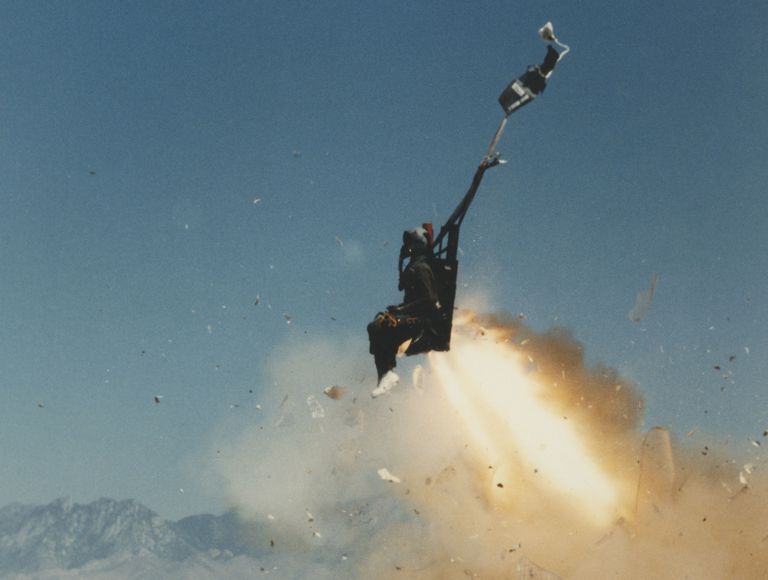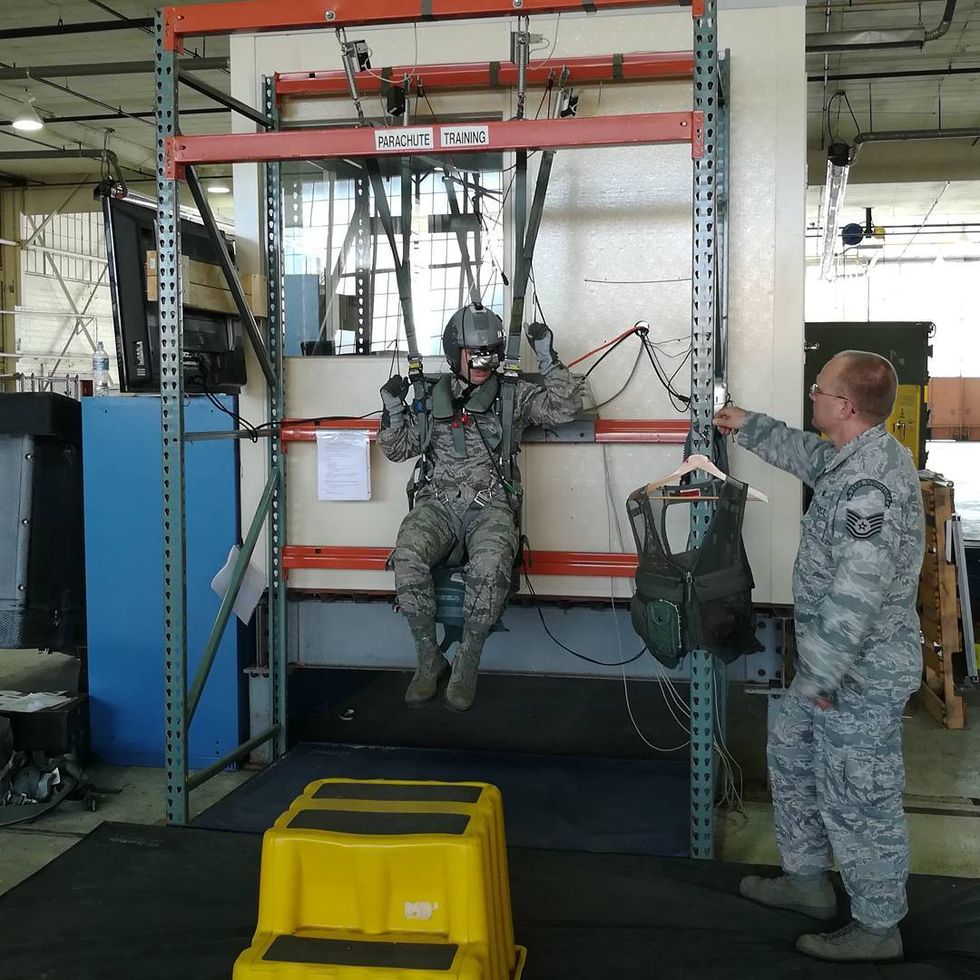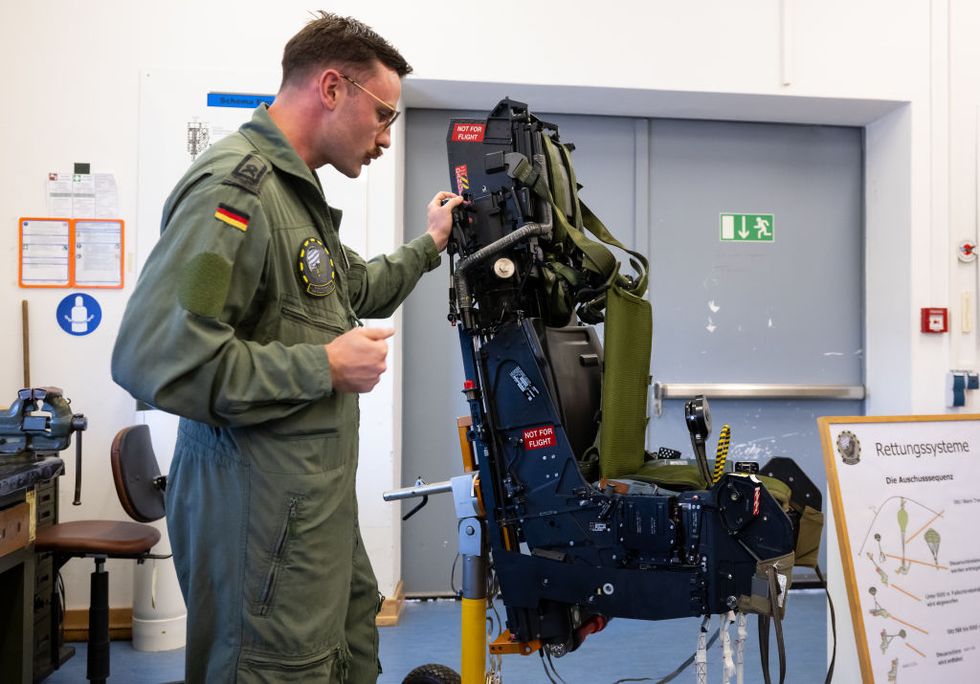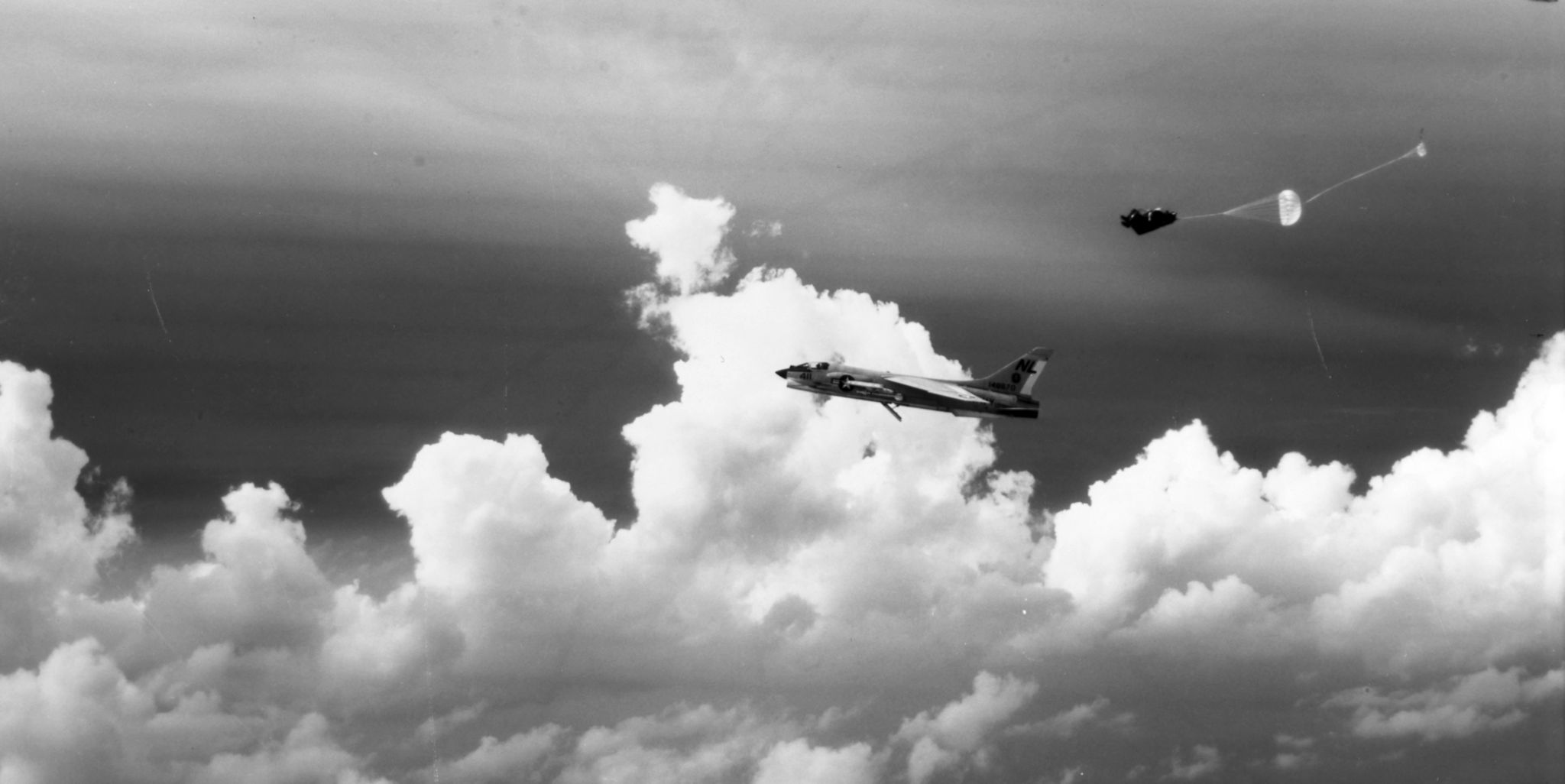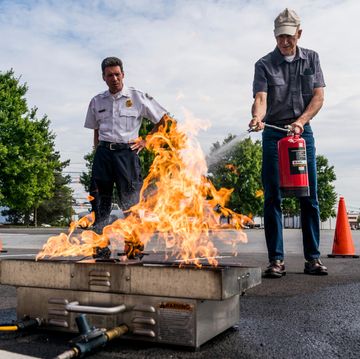The last thing a fighter pilot wants to do is eject, and it’s not just because they’re abandoning the ship to a fiery demise. The turbulent process of ejecting puts pilots at serious risk of injury. Once those rockets fire under the seat, they blow a person up and out of the cockpit with enough force to seriously bruise both shoulders on the harness straps and possibly break collarbones. And you better tuck in your knees and elbows, because if anything hits the side of the cockpit on the way out, it’s coming off.
I went down to Langley Air Force Base in Hampton, Virginia, during the 2017 Atlantic Trident exercise, an international training exercise in which American, British, and French air forces fly all three nations’ top jets together. F-22s, F-35s, French Dassault Rafales, and British Eurofighter Typhoons took to the skies together for the very first time, pitting the new jets in mock engagements against red air adversaries in F-15s and T-38s. I got to hop in the back of a T-38 trainer for one of the exercise flights—but not before five hours of egress and ejection training just in case anything went wrong.
A Fire Under Your Ass
First, you learn what to listen for. If the pilot needs to warn you that you’re going to have to eject in the near future, he will use the word “eject,” as in, “Hey, get ready, we are going to have to eject in about 30 seconds.” If things go horribly wrong and you need to blow out of the ship immediately, the command is, “bailout! bailout! bailout!”
Each pilot, co-pilot, or weapons systems officer wears a large parachute and harness that buckles into the seat of their aircraft. When you pull one or both of the two levers positioned on the sides of the seat, charges fire to blow the aircraft canopy and then rocket boosters under your ass take the whole seat, with you in it, up and out of the jet. Within seconds you should be floating over the falling aircraft with a parachute canopy fluttering over your head.
In newer two-seat jets, the ejection seats are synchronized so activating one triggers the other. But in the older T-38, each person needs to take care of himself or herself. The co-pilot sitting in the rear seat needs to go first—otherwise the rockets from the pilot’s seat will burn the person sitting behind. After you fly out, the seat itself falls away. The chute automatically deploys if you are at low enough altitude, and if all goes well, you should float to the ground at a speed that won’t kill you.
Watch: U.S. Air Force Captain Brian Udell recounts how he survived ejecting from an F-15 at over the speed of sound.
But your work is not done just because you yanked those levers and left the jet. The system is designed to be mostly automated, but there is no guarantee that everything will function like it’s supposed to. A small metal key attaches to the main belt of your harness, and when you eject, it pulls and activates a small red knob on the left side of your harness, called the “red apple” by airmen. This activates your parachute, which will deploy automatically as long as you are 14,000 feet or lower. (Any higher and you could freeze, or go hypoxic from lack of oxygen, or both. Not to mention that canopy openings at high altitude are much more violent due to the thinner air, increasing the risk of injury upon chute deployment.)
If you fall below 14,000 feet and your chute fails to deploy, you can pull a rip cord manually to release the canopy. Generally speaking, a pilot would know the altitude at which they punched out, but it can be difficult to tell how high you are once you are free falling. The instructor at Langley simply said, “If you see the ground coming up big and fast, pull the rip cord.” If the chute deploys above 14,000 feet and you are having trouble breathing, there is a “green apple” knob on the right side of your harness that you can pull to buy yourself about eight minutes of oxygen supplied to your mask from a reserve in your parachute rig.
Hiccups
If you ever have to punch out of a fighter jet, you will quickly want to assess your situation, which will determine the next step. You are over either water or land, and more importantly, you are either at a high enough altitude to prepare for the landing or too low to do anything but brace for impact.
In the case of a low-altitude ejection, all you can do is glance at your canopy to make sure it opened fully and then tuck your feet, bend your knees, and prepare to hit hard. The proper technique is to hit with the side of one of your feet first, and then collapse with the momentum so that the impact spreads out over the side of your leg, your hip, and then below the shoulder on your back, dissipating some of the energy. If you land straight on the balls of your feet, or with stiff legs, you’re liable to break something even if you have had adequate time to slow down with the parachute.
If you eject up around 10,000 feet, so you have a little time in the air, there is a standard checklist to run through, one that fighter pilots can rattle off in their sleep: canopy, visor, mask, seat kit, LPU (life preserver unit), 4-line jettison, steer into the wind, prepare for PLF (parachute landing fall). First you put your hands on the parachute risers and tilt your head back to get a good look at the chute. It’s possible that in the chaos of ejection the suspension lines get twisted up, in which case you are supposed to grab the risers, pull them apart, and kick your legs like a wild man riding a bicycle to spin yourself around and untangle the lines.
Watch: A parachutist untangles their lines mid-air.
The parachute canopy itself should be a nice full circle, but a couple things can happen to give you two smaller circles rather than a full canopy, significantly reducing the effectiveness of the chute. The first is that a suspension line can get caught up over the top of the canopy. If this happens, you have to start tugging on lines to find the one or ones that got snagged. You can yank on the line and move it around to try to force it to fall free, but if that doesn’t work—and this is going to sound a little crazy—you are supposed to cut the line. Flight suits have a small pocket containing a hooked knife for just this purpose. But there is a hard and fast rule: Don’t cut more than four lines. If you cut four, and you still haven’t found the one that got snagged, you just have to make do with the tangled chute and brace for a hard landing.
The other common malfunction is called a partial inversion. A full inversion is when the parachute canopy deploys inside out, but generally speaking this is no big deal and you might not even notice. A partial inversion, however, is when the canopy itself gets twisted so half the chute is deployed inside out and there are two distinct domes separated by the twist in the middle. If this happens, you are supposed to yank down on the risers as close to your hips as you can get them, then let them go so they snap back into place, shaking the chute and hopefully untwisting it to give you that nice full canopy.
Come On Down
Once the canopy is fully deployed, the rest of the checklist is fairly straightforward. Lift your visor away from your eyes and then pull off your mask. Make sure the seat itself has fallen away from you and that the seat kit, full of survival supplies, is dangling behind you. After that, if you are going make a water landing, activate your life preserver unit by pulling down on two cords (if you do not do this manually, the LPU will deploy automatically after soaking up a bit of water).
Then it comes time for the four-line jettison. Assuming you didn’t have to cut any lines, your chute is fully deployed, and there are no holes in your canopy, you are instructed to pull down on both the steering lines, all the way to your hips, which shears four lines on one side of the parachute. This creates an indentation on that side of the chute, which propels the parachute forward at about 5 knots.
Watch: A U.S. Air Force Thunderbirds pilot has to eject during an air show demonstration.
After the four-line jettison, the goal is to use the steering lines to steer into the wind so that when you hit the ground, you are traveling nearly straight down. You get into the correct body position for a PLF—feet together, bent knees, chin tucked in—and use the same technique mentioned before to fall along one side of your body, maximizing the number of impact surfaces.
Once you touch down, it’s a matter of surviving until you are found and rescued. If you are in the water, which is likely considering the Air Force does much of their flight training over water and Navy aviators operate from carriers, then you are probably very cold. Your seat kit contains a one-man raft that automatically inflates as well as survival supplies including a flare, smoke signal, knife, first aid supplies, water, and some other basic provisions. It can take hours or days for rescue crews to find you, especially if it’s dark or you’re in a remote location.
If you have to eject from a fighter plane, you will come away from the experience significantly bruised and battered, possibly with fractured bones and torn ligaments. But despite the risks of ejection seats, they do save pilots’ lives. In 2017, a Navy aviator safely ejected from an F/A-18 after an aborted landing on the aircraft carrier USS Carl Vinson. In 2004, a U.S. airman at Nellis AFB had to eject from the then-new F-22 Raptor when the flight controls failed during takeoff, injuring him from the low-altitude ejection, but saving his life.
No pilot ever wants to eject. The sting of losing the aircraft is often coupled with the sting of serious physical injury. But compared to the alternative, the choice is clear.

Jay Bennett is the associate editor of PopularMechanics.com. He has also written for Smithsonian, Popular Science and Outside Magazine.
